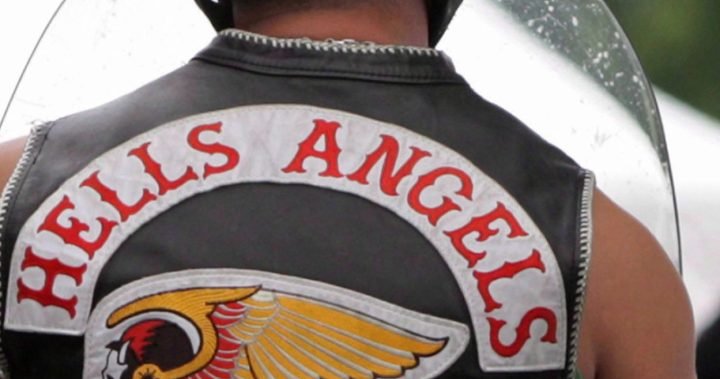Investigating The Hells Angels: Their Global Presence And Activities

Table of Contents
The History and Origins of the Hells Angels
The Hells Angels' story begins in 1948, in San Bernardino, California. Founded by a group of World War II veterans, the club initially adopted a more traditional motorcycle club image. However, over time, their activities evolved, and their image transformed into the notorious outlaw biker gang we know today. This evolution involved a gradual shift toward organized crime, marked by several key milestones and fueled by internal conflicts and external pressures. The club's public perception, shaped by media portrayals and their own actions, solidified their image as a powerful and dangerous organization.
- Founding year and location: 1948, San Bernardino, California.
- Early membership and activities: Primarily focused on motorcycle riding and camaraderie, with early signs of involvement in minor criminal activities.
- Key milestones in their history: Expansion across the United States and internationally, escalating involvement in organized crime, significant conflicts with rival motorcycle clubs.
- Significant legal battles and trials: Numerous prosecutions for drug trafficking, violence, and other criminal activities, highlighting the ongoing legal challenges presented by the HAMC.
Global Presence and Chapter Structure
The Hells Angels operate under a decentralized organizational structure, with individual chapters maintaining a degree of autonomy while adhering to overarching club rules and hierarchies. This structure allows for expansion and operation across numerous countries and continents, making them a truly global phenomenon. However, the level of influence and criminal activity varies significantly depending on the region and the specific chapter. Tracking and monitoring their activities globally poses a significant challenge for law enforcement agencies worldwide.
- Number of chapters worldwide: Hundreds of chapters across multiple continents.
- Key regions of influence: North America, Europe, Australia, and parts of Asia.
- Differences in chapter operations across regions: Varying levels of involvement in organized crime, differing relationships with local authorities, and adaptation to local laws and cultures.
- Challenges in tracking and monitoring their activities globally: Decentralized structure, international reach, and sophisticated methods of concealing their operations.
Criminal Activities and Involvement
The Hells Angels are widely implicated in a range of serious criminal activities. These activities are integral to their operations and often overlap, creating a complex web of illegal enterprises. Their methods for concealing their illicit activities are sophisticated, involving intricate financial networks and a culture of secrecy. Law enforcement agencies face significant hurdles in dismantling these operations and bringing members to justice.
- Drug trafficking operations: Large-scale distribution of various illegal narcotics.
- Arms dealing and weapons smuggling: Providing firearms and other weapons for criminal enterprises.
- Extortion and racketeering: Using intimidation and violence to coerce businesses and individuals.
- Violence and organized crime links: Frequent involvement in violent crimes, often linked to other organized crime groups.
- Money laundering techniques: Sophisticated methods to conceal the origin of illicit funds.
Law Enforcement Strategies and Challenges
Investigating and prosecuting Hells Angels members present formidable challenges for law enforcement. Their hierarchical structure, strong code of silence, and international reach complicate investigations. Law enforcement agencies employ various strategies, including infiltration, surveillance, and international cooperation, to combat their activities. However, gathering sufficient evidence to secure convictions remains a major obstacle. Legal limitations and complexities further hinder effective prosecution.
- Infiltration tactics used by law enforcement: Undercover operations, informants, and wiretaps.
- Challenges in gathering evidence: Secrecy, intimidation, and the difficulty in obtaining witness testimony.
- International cooperation in investigations: Sharing intelligence and coordinating enforcement actions across borders.
- Legal limitations and obstacles: Difficulties in obtaining search warrants, proving criminal intent, and navigating complex legal jurisdictions.
Public Perception and Media Representation
The Hells Angels have been portrayed in media and popular culture in wildly contrasting ways, ranging from romanticized depictions of rebellious freedom to accurate portrayals of their criminal activities. These representations significantly influence public perception and shape understanding of the club’s true nature. The romanticized view often overshadows the realities of their criminal operations, creating a complex and sometimes misleading public image.
- Stereotypical media representations: Often depicted as rebellious outlaws, ignoring their criminal activities.
- Influence of popular culture: Movies, books, and television shows shape public opinion.
- Impact on public perception and fear: Both romanticized and realistic portrayals contribute to public fear and fascination.
- Role of media in shaping public discourse: The media plays a crucial role in informing the public and shaping law enforcement strategies.
Conclusion: Understanding the Hells Angels: A Continuing Investigation
The Hells Angels Motorcycle Club represents a complex and enduring challenge to law enforcement and society. Their global reach, sophisticated criminal operations, and decentralized structure make them incredibly difficult to investigate and prosecute effectively. Understanding their history, organizational structure, and criminal activities is crucial for developing effective strategies to combat their influence. This necessitates ongoing research and investigation into the HAMC's operations. Continue your own investigation into the Hells Angels Motorcycle Club and their global activities to gain a more complete understanding of this complex organization. Investigating the Hells Angels and their impact on society requires sustained effort and collaboration across international borders.

Featured Posts
-
 Yubiley Sergeya Yurskogo 90 Let Zhizni I Tvorchestva
May 25, 2025
Yubiley Sergeya Yurskogo 90 Let Zhizni I Tvorchestva
May 25, 2025 -
 Ferraris New Bangkok Flagship Facility Opens
May 25, 2025
Ferraris New Bangkok Flagship Facility Opens
May 25, 2025 -
 Primera Comunion De Jacques Y Gabriella De Monaco Fotos Y Detalles
May 25, 2025
Primera Comunion De Jacques Y Gabriella De Monaco Fotos Y Detalles
May 25, 2025 -
 Francis Sultanas Interior Design For Robuchon Restaurants In Monaco
May 25, 2025
Francis Sultanas Interior Design For Robuchon Restaurants In Monaco
May 25, 2025 -
 Amundi Msci World Ii Ucits Etf Usd Hedged Dist Nav Explained
May 25, 2025
Amundi Msci World Ii Ucits Etf Usd Hedged Dist Nav Explained
May 25, 2025
